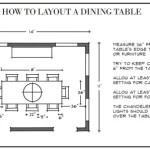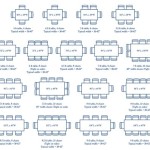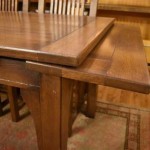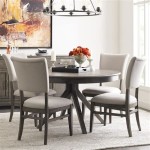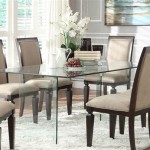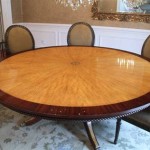How To Measure A Dining Table
Accurately measuring a dining table is crucial for ensuring it fits comfortably in a dining space and accommodates the desired number of diners. Incorrect measurements can lead to a cramped dining area or a table that's too small for practical use. This guide provides a detailed explanation of how to measure a dining table correctly, taking into consideration various table shapes and important dimensions.
Measuring the Tabletop
The tabletop's dimensions are the most fundamental measurements. These measurements determine the table's footprint and seating capacity. Use a standard tape measure, ensuring it lies flat against the table surface for accurate readings. Record all measurements in inches or centimeters, maintaining consistent units.
For rectangular and square tables, measure the length and width. The length is the longest side, and the width is the shorter side. For square tables, these measurements will be equal. For round tables, measure the diameter, which is the distance across the table through the center. Oval tables require two measurements: the length, which is the longest distance across the center, and the width, which is the shortest distance across the center.
Measuring Table Height
Table height is a critical factor for comfortable dining. It determines the appropriate chair height and overall ergonomic experience. Measure the vertical distance from the floor to the tabletop's upper surface. This measurement should be taken from several points around the table to ensure consistency, especially for older tables that might have uneven legs. A standard dining table height is typically between 28 and 30 inches.
Measuring Apron Height
The apron is the frame that supports the tabletop underneath. Its height affects legroom and the types of chairs that can be used comfortably. Measure the vertical distance from the bottom edge of the apron to the floor. This measurement is important for determining if chairs with arms will fit under the table without obstruction. Subtract the apron height from the overall table height to find the available legroom space.
Measuring for Leaf Extensions
Many dining tables come with leaf extensions that allow for increased seating capacity when needed. If the table has leaves, measure the table's length and/or width with the leaves fully extended. This will provide the maximum dimensions of the table and help determine the space required when the table is in its expanded configuration. Measure the width of each individual leaf as well. This information is helpful for understanding the incremental size increases provided by each leaf.
Documenting Measurements
Maintain a clear record of all measurements. Create a simple sketch of the table shape and label each measurement accordingly. This visual representation aids in quickly referencing the dimensions and prevents confusion. Keeping a record is particularly useful when shopping for new dining chairs or planning furniture placement in a room.
Considering Clearance
Beyond the table's physical dimensions, consider the necessary clearance around the table for comfortable movement. Ideally, allow 36 to 48 inches of space between the table edge and walls or other furniture. This provides ample room for chairs to be pulled out and for people to walk around the table without obstruction. For smaller dining areas, a minimum of 24 inches may be acceptable, though it can feel more cramped.
Measuring for Irregular Shaped Tables
For tables with irregular shapes, such as those with curved edges or multiple angles, take multiple measurements at various points. Focus on the widest and longest points of the table to ensure accurate representation of its size. A combination of length, width, and depth measurements might be necessary to fully capture the table's dimensions. Consider creating a scaled drawing of the table outline, marking key measurements on the drawing for clarity.
Using Measuring Tools Effectively
Ensure the tape measure is held taut and straight against the surface being measured to avoid inaccurate readings. For curved surfaces, use a flexible tape measure that can conform to the shape. A metal tape measure generally provides greater accuracy than a cloth or plastic tape measure. When measuring alone, a locking mechanism on the tape measure can be helpful for maintaining accurate measurements without assistance.

How To Measure A Room For Furniture Efurniturehouse Com

How To Pick A Table Guide Including Dimensions

How To Choose The Right Dining Table Size And Shape Contemporary Wooden Furniture Hand Made In Cincinnati Ohio Modern Traditional Craft

The Right Size Dining Table For Your Space

How To Choose The Right Dining Bench Timber Table
Tips On How To Measure Your Dining Space

3 Easy Ways To Measure Tablecloth Sizes Your Table Linens Size Guide

Dining Table Design Basics Tablelegs Com

How Do I Choose The Right Size Of Solid Wood Dining Table Set For My S Picket Rail Custom Furniture Interiors

How To Measure Table And Chairs Youtube


